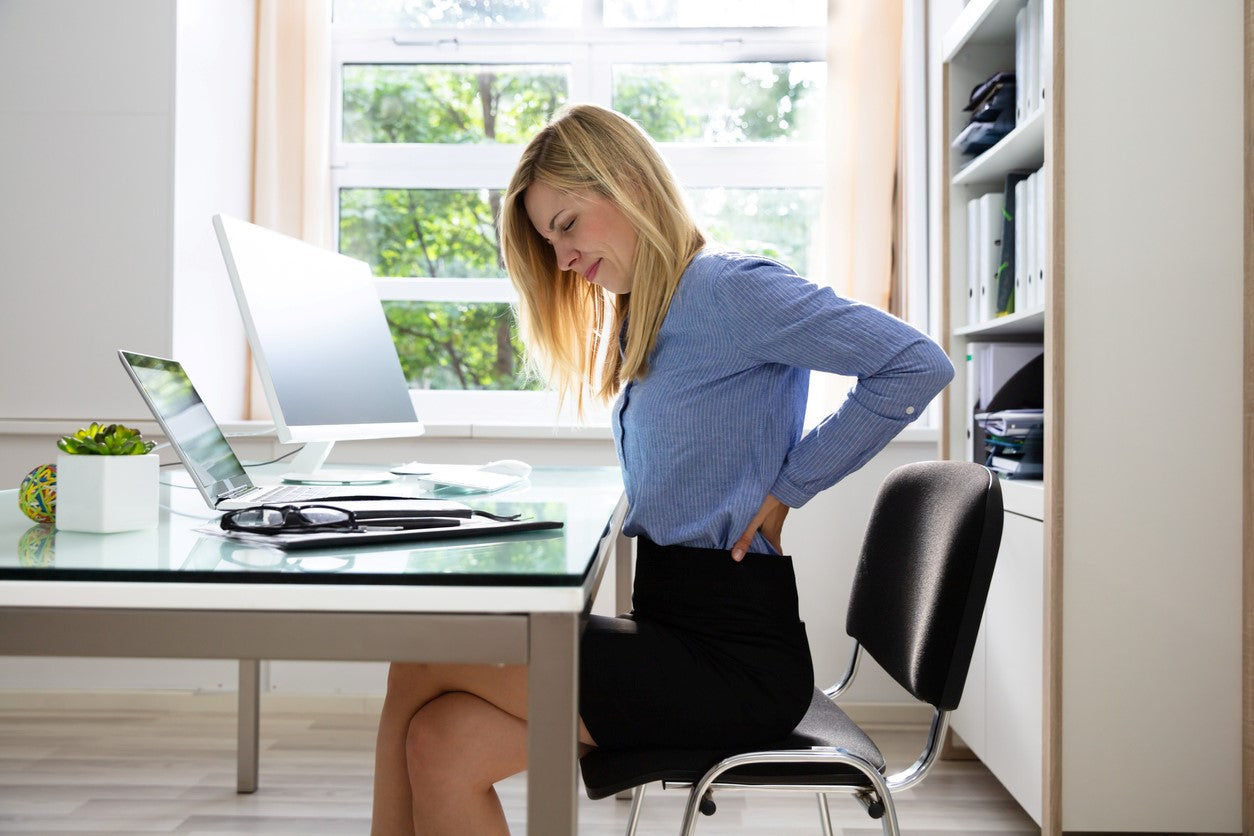Lower back pain is a common issue, especially among those who spend long hours sitting at a desk or in a car. The good news is that there are several strategies you can implement to relieve lower back pain while sitting. This blog post will provide you with practical tips to help you maintain comfort and reduce pain throughout your day.
1. Optimize Your Sitting Posture
Good posture is key to reducing the strain on your lower back:
- Support Your Back: Use a chair that provides good spinal support, especially in the lumbar region. If your chair doesn’t have sufficient lumbar support, consider using a cushion or a rolled-up towel to maintain the natural curve of your spine.
- Adjust Your Chair: Ensure that your chair is the right height. Your feet should rest flat on the floor, and your knees should be at a right angle. This alignment helps reduce stress on your lower back.
- Keep Your Shoulders Relaxed: Avoid slumping forward. Keep your shoulders relaxed and aligned with your hips to prevent unnecessary strain on your back.
2. Take Regular Breaks
Sitting for long periods can exacerbate back pain. Make it a habit to take short breaks:
- Stand Up: Every 30 to 60 minutes, stand and stretch or walk around for a few minutes. This helps relieve the pressure on your spinal discs and muscles.
- Simple Stretches: Perform light stretches that focus on your lower back and legs to help loosen tight muscles and enhance blood flow.
3. Use Ergonomic Accessories
Invest in ergonomic accessories to enhance your sitting experience:
- Adjustable Desk: Consider using a standing desk or an adjustable converter that allows you to alternate between sitting and standing.
- Footrest: If your feet don’t comfortably reach the floor, use a footrest to support your legs and reduce strain on your back.
4. Exercise and Strengthen Your Core
Strong core muscles are essential in supporting your spine. Engage in exercises that strengthen your abdominal and back muscles:
- Daily Exercise Routine: Incorporate exercises like planks, bridges, and pelvic tilts into your daily routine.
- Join a Class: Consider taking a Pilates or yoga class, which focuses on core strength and flexibility.
5. Mind Your Screen Height
The position of your computer screen can also impact your posture:
- Eye Level: Ensure that the top of your monitor is at eye level. This prevents you from bending your neck forward or looking down, which can strain your back.
6. Manage Stress
Stress can tighten your muscles, including those in your back, and worsen pain:
- Relaxation Techniques: Incorporate mindfulness, deep breathing, or gentle yoga into your daily routine to help manage stress and relax tight muscles.
7. Consult a Professional
If your back pain persists despite these changes, or if it worsens, consult a healthcare provider. They may recommend physical therapy, further ergonomic adjustments, or other treatments tailored to your specific needs.
Conclusion
Sitting doesn't have to be painful. By adjusting your environment and habits, you can significantly reduce or prevent lower back pain. Remember that a combination of good posture, regular movement, and proper support is your best defense against the challenges of prolonged sitting. Stay proactive about your spinal health to maintain your well-being and enhance your productivity.

